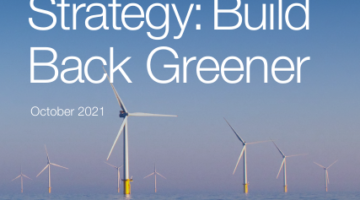
Fuel poverty is a critical issue because it has direct implications for people’s quality of life. Not being able to afford to heat your home adequately can have serious health implications, particularly for vulnerable groups such as the elderly, children, and those with pre-existing health conditions. Cold and damp homes can increase the risk of respiratory problems, exacerbate existing health conditions, and increase stress and anxiety levels.
What is fuel poverty?
Fuel poverty is a term used to describe the situation where a household is unable to afford to keep its home adequately heated. The term originated in the UK in the 1970s during a time of rapidly increasing energy prices. It was first used in the academic context by Brenda Boardman in her 1991 book “Fuel Poverty: From Cold Homes to Affordable Warmth”.
Since then, fuel poverty has become a recognized and defined term in social policy, particularly in the UK and Europe. The term is not as widely used or recognized in some other countries, such as the United States, where similar issues might be discussed in terms of energy insecurity or energy burden.
In the UK, a more precise definition has been used. A household is considered to be in fuel poverty if they have required fuel costs that are above the national median level and, were they to spend that amount, they would be left with a residual income below the official poverty line.
The concept of fuel poverty highlights the intersection of several important social issues, including income inequality, housing, and energy policy. It is a reminder that while energy prices and energy use have important environmental implications, they also have direct and significant impacts on people’s quality of life. The ability to heat one’s home adequately is a basic necessity, and when people are unable to afford this, it can lead to significant hardship and health problems.
Causes of fuel poverty
Fuel poverty is a multifaceted problem that can be influenced by a variety of factors. Here’s a more detailed look at the main causes:
-
High Energy Costs: The price of energy is a critical factor. If energy prices increase significantly, it can push more households into fuel poverty. Factors influencing energy costs can include global oil and gas prices, renewable energy subsidies, and the operating costs of energy companies. Additionally, those on prepayment meters, often the most financially vulnerable, usually face higher tariffs.
-
Low Income: If a household has a low income, it can struggle to afford the energy it needs to heat its home adequately. Income might be low for many reasons – the household members might be unemployed, underemployed, or working in low-paid jobs, or they might be reliant on social security payments. Economic factors like inflation, wage stagnation, and high living costs can also contribute to low disposable income.
-
Energy Inefficiency of Homes: The energy efficiency of a home can have a significant impact on the cost of heating it. Older homes, in particular, can often be poorly insulated or have outdated, inefficient heating systems, leading to high energy costs. The cost of improvements can be prohibitive for low-income households, creating a vicious cycle where they cannot afford the upfront investment needed to reduce their ongoing energy costs. Inefficient homes are not only a problem for those living in them but also contribute to higher carbon emissions.
-
Lack of Affordable Housing: The lack of affordable, energy-efficient housing can contribute to fuel poverty. If people can’t afford to live in homes that are well-insulated and have efficient heating systems, they will end up spending a higher proportion of their income on energy.
-
Lack of Consumer Awareness or Engagement: Sometimes, households may be on a more expensive energy tariff than they need to be, either because they are not aware of the cheaper options available or because they find the process of switching suppliers too complex or daunting.
-
Social Factors: Certain groups may be more vulnerable to fuel poverty, including the elderly, those with disabilities, single-parent families, and people living in rural areas where homes may be off the gas grid and thus reliant on more expensive forms of heating.
-
Policy Factors: Government policies can influence fuel poverty levels, either positively or negatively. For example, social security policies can affect people’s incomes, while energy and housing policies can affect the cost of energy and the energy efficiency of homes.
Addressing fuel poverty requires tackling these issues in a holistic way, as they are often interconnected. For example, improving the energy efficiency of homes can reduce energy costs, but this might require government support or incentives, particularly for low-income households who cannot afford the upfront costs. Similarly, policies to increase incomes, whether through higher wages or more generous social security payments, can also play a role in reducing fuel poverty.
How can we address it?
Addressing fuel poverty is a complex challenge that requires a mix of interventions. These might include:
-
Energy efficiency measures: Improving the energy efficiency of a home can significantly reduce the cost of heating it. This might involve installing better insulation, upgrading to a more efficient heating system, or even smaller measures like draught-proofing.
-
Financial support: This could involve direct financial support to help with energy bills or broader measures to increase household income, such as increasing social security benefits or wages.
-
Fairer energy pricing: Interventions in the energy market could also help to reduce the cost of energy for those in fuel poverty.
-
Education and advice: Providing advice on how to reduce energy consumption and switch to cheaper tariffs can also help.
Each of these interventions can play a role in reducing fuel poverty, but it’s likely that a combination of measures will be needed to address the problem fully.
Fuel poverty is a significant issue, not just in the UK but in many other countries too. It’s closely linked to wider issues such as income inequality, social justice, and climate change. Addressing it is therefore a key part of creating a fairer and more sustainable society.












No Comments yet! Be the first one.